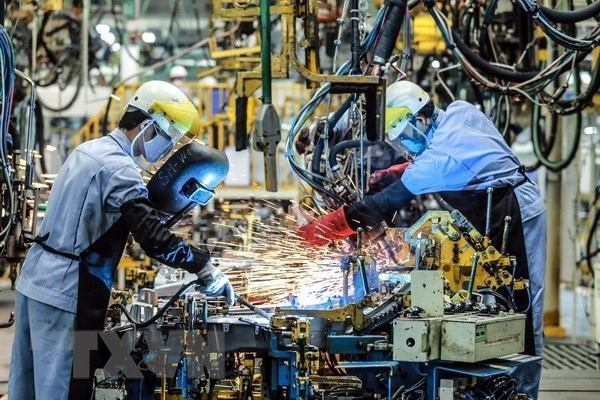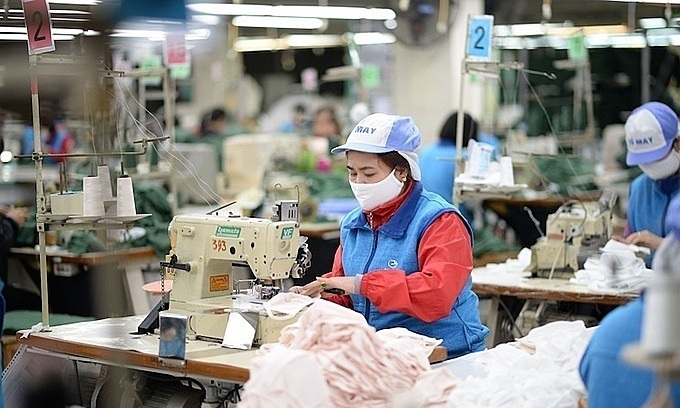HSBC: Vietnam still only ASEAN country to evidence positive growth
| Vietnam emerges as FDI hub in Asia: the Eurasian Times | |
| WB: Vietnam's GDP forecasted to grow at 2.5-3% in 2020 | |
| Expert: Vietnam looks like a miracle from a bygone era |
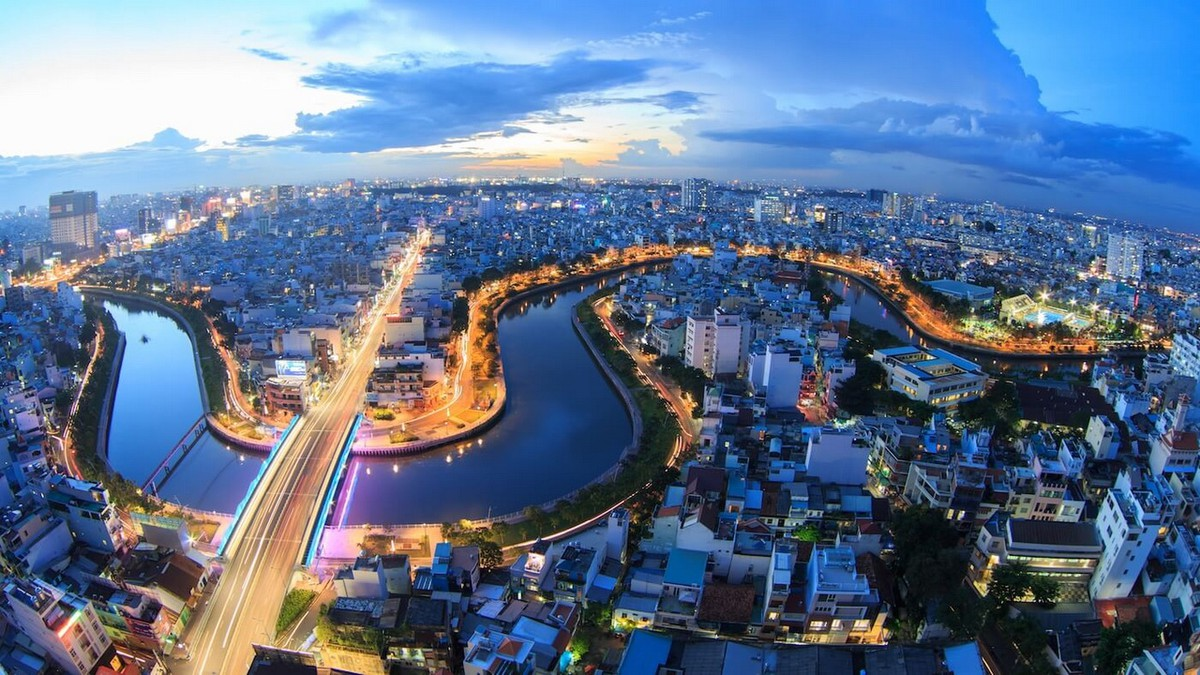 |
| HSBC forecast Vietnam will achieve GDP growth of 2.6 percent in 2020 and then rebound strongly with 8.1 percent growth in next year. Photo: nhipsongdoanhnghiep |
Vietnam is still the only ASEAN country to evidence positive growth this year, and the country continues to be among the world’s most attractive emerging economies, HSBC Vietnam CEO Tim Evans has said.
According to CEO of HSBC Vietnam Tim Evans, the Vietnamese economy has shown its incredible resilience during these unprecedented times.
HSBC forecast Vietnam will achieve GDP growth of 2.6 percent in 2020 and then rebound strongly with 8.1 percent growth in next year.
Despite 2.6 percent being the lowest growth rate in many years, Vietnam is still the only ASEAN country to evidence positive growth this year, he noted.
The CEO referred to the International Monetary Fund (IMF)’s forecast that Vietnam’s GDP growth would reach 2.4 percent for 2020 and remains one of four economies in the world that have positive growth of GDP per capita this year, including Taiwan, Egypt and China.
 |
| CEO of HSBC Vietnam Tim Evans. Source: HSBC |
In 2020, manufacturing and exports remain the two driving forces for Vietnam's economic growth, together with foreign direct investment (FDI) which also plays a crucial role.
Vietnam’s international profile continues to grow with increasing economic integration from joining the WTO and the signing of 14 active multi- and bi-lateral trade agreements.
Another bright spot for Vietnam's economy in 2020 has been the Government’s consensus in pursuing the international trade integration policy which has been reflected by the conclusion of negotiation of the UK Vietnam Free Trade Agreement (UKVFTA) in December, the effect in August of the Vietnam - EU Free Trade Agreement (EVFTA) and the recently signed Regional Comprehensive Economic Partnership (RCEP), the CEO said.
These agreements will help Vietnam diversify export markets and trading partners, which is also one of the best ways to minimise risks from excessive dependence on a specific trading partner which COVID-19 has made this risk apparent. The increased and diversified global integration will also help Vietnam access foreign capital sources, supporting Vietnamese businesses to become more competitive.
“I would also like to call attention to the remarkable determination of Vietnamese businesses community. The business community has decided to not surrender or succumb to the difficulties caused by the external environment but instead has looked to find ways to overcome the challenges they faced as a result of lockdowns, closed borders and social distancing measures,” Evans said.
He cited a recently published HSBC Navigator report as saying up to 68 percent of Vietnamese companies implemented changes over the last 12 months to cope with the pandemic.
In addition, moving forward, they intend to focus their investment on sales channels, up-skilling their workforce, enhancing the customer experience and improving cash flow/capital management in 2021.
They also intend to invest in technologies that will help improve speed to market, customer targeting and enhance automation / operational efficiency.
“It is worth noting of not only a continuous growth, but much of Vietnam’s recovery comes from internal forces,” stated Evans.
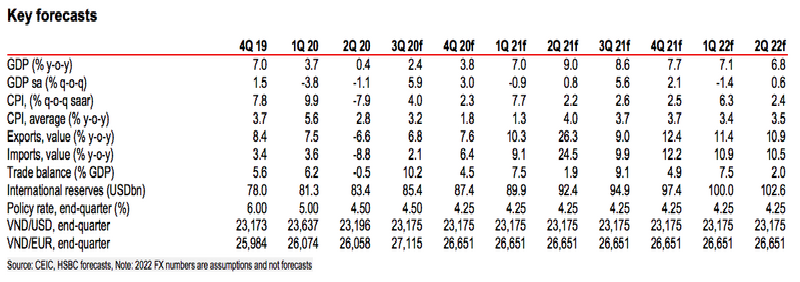 |
| Photo: HSBC |
November indicators showed that Vietnam was on track for a solid economic recovery.
Manufacturing has grown double digits for the first time since the start of the COVID-19, while exports continue to shine due to increased electronics shipment.
The index of industrial production (IIP) for 11 months of 2020 is estimated to increase by 3.1 percent over the same period last year. The export turnover of 11 months of 2020 is estimated to achieve USD254.6 billion, up 5.3 percent y-o-y.
Therefore, HSBC continues to hold a positive outlook for the Vietnamese manufacturing industry and for the Vietnamese economy as a whole, the CEO stressed.
Vietnam to maintain recovery momentum in 2021
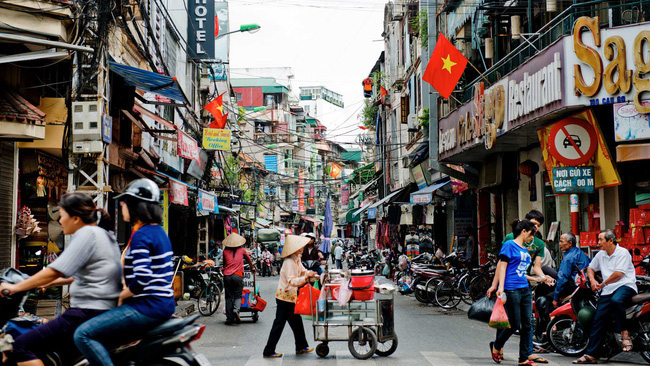 |
| Vietnam will continue its recovery momentum by benefiting from domestic consumption, stable trade growth and FDI inflows. Photo: FT |
Entering 2021, Vietnam will continue its recovery momentum by benefiting from domestic consumption, stable trade growth and FDI inflows, according to Evans.
Meanwhile, in the context of consumption being negatively affected by the pandemic, inflation will continue to be controlled below the average level of 4 percent set by the National Assembly.
The trade agreements, with which negotiation concluded, or signed or in effect such as UKVFTA, EVFTA or RCEP will continue to be a solid premise to boost growth in the export sector, pushing trade surpluses.
Meanwhile, with its solid macroeconomic background and the ability to handle and repel the pandemic, it is not difficult to see that Vietnam will continue to be a bright investment destination in the region, especially in the electronic component manufacturing industry.
Against the context of unpredictable fluctuations of exchange rates, businesses, especially in export-import area and businesses with foreign loans in foreign currencies need to actively use hedging tools, especially through derivatives such as term contracts, interest rate swap contracts, etc. to ensure their proactiveness in cash flow planning and profit balancing.
According to Evans, joining free trade agreements means increasing competition, but “it is great to compete with the very best,” which forces companies to be nimble, adjust and innovate./.
| The UK-based Global Business Outlook recently cited the Development Bank of Singapore (DBS)’s report as saying that Vietnam’s economy could grow bigger than Singapore by 2029. In its report, the DBS predicts that Vietnam could grow at a pace of 6 percent to 6.5 percent in the next ten years. “If it can sustain that pace of growth, the Vietnam economy will be bigger than the size of the Singapore economy in ten years’ time”, the magazine citied the bank’s senior economist Irvin Seah as saying. The DBS’s forecast is largely based on factors such as robust foreign investment inflow and productivity growth in the next couple of years. Currently, the Vietnamese economy is worth 224 billion USD. This means it covers 69 percent of Singapore’s economic size which is worth 324 billion USD./. |
 | ADB lifts Vietnam’s economic growth forecast to 2.3% this year The Asian Development Bank (ADB) has raised its forecast for Vietnam's economic growth from 1.8% to 2.3% in 2020, thanks to the promotion of public ... |
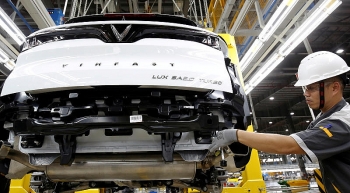 | IMF ranked Vietnam’s GDP growth among highest worldwide The International Monetary Fund has revised upward its forecast for Vietnam’s 2020 GDP growth by 0.8 percentage points to 2.4 percent. |
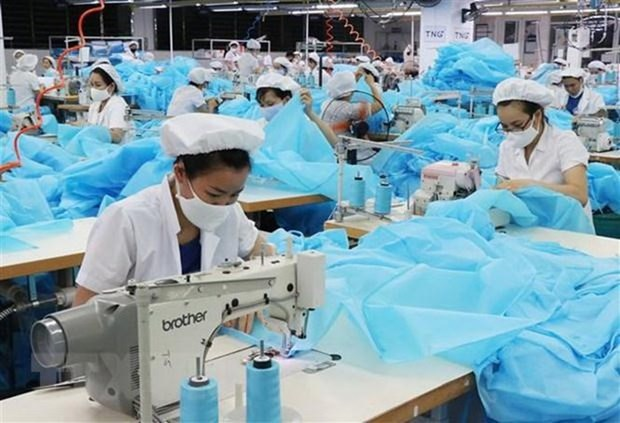 | Singaporean outlet: Vietnam’s economy recovers faster than other countries' in region Singaporean property website propertyguru.com.sg has recently cited a report by Maybank Kim Eng, Malaysia's largest bank which states that both Vietnamese and Singaporean economies show ... |

